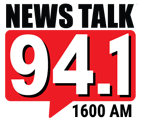During the hottest months of the year, livestock can be at risk for heat stress.
Common signs of heat stress include foaming at the mouth, panting, and trembling. White County UT Extension Agent Scott Swoape said high temperatures and humidity can raise the heat index to concerning levels.
“The species of livestock that are most prevalent that’s going to see more stress from heat is cattle and hogs,” Swoape said. “Of course sheep and goats and horses-they’re all going to experience heat stress, but cattle and hogs it’s harder for them to regulate body temperature.”
Swoape said ways to reduce heat stress is to provide natural or artificial shade, plenty of water, and to reduce management stress like vaccinations or weaning. He said the best time to transport livestock is early morning or in the evening when the temperature is cooler.
If an animal is under heat stress, move it to the shade and provide plenty of water. Swoape said during dry seasons, it’s harder to ensure there’s enough for the livestock. He said a cow during the winter will drink 13 gallons a day, and twice that during the summer.
“If we do have some drought stress, and it minimizes the amount of water in our ponds, if that’s a water source that you’re using, it’s going to minimize the amount of water that’s in there,” Swoape said. “Also as that pond level goes down, those conditions are going to be less favorable. It’s going to be more muddy water and so those cattle are not going to have a clean water source.”
Heat stress affects include reduced eating and weight gain, irritability, and poor breeding efficiency.
 News Talk 94.1/AM 1600 Where The Upper Cumberland Talks
News Talk 94.1/AM 1600 Where The Upper Cumberland Talks







